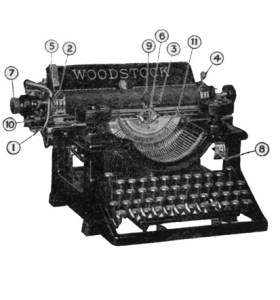
Hi. Kim Gray here. Today we welcome Stuart Horwitz the founder and principal of Book Architecture. He is the author of three books, the latest being Finish Your Book in Three Drafts: How to Write a Book, Revise a Book, and Complete a Book While You Still Love It. He joins us today to discuss The Five Definitions of Scene.
What’s the big deal about scene? Well, as a group of self-contained passages within your narrative, they are nothing less than the building blocks of your work. Finding the places where your scenes break and separating them into discrete units can help you move scenes around, divide and combine them, and eliminate them when necessary.
The most commonly heard expression in writing circles is probably “Show, don’t tell,” which means you must put us in the scene. Don’t tell us about it, don’t tell us that it happened, don’t tell us that your characters—or you as the narrator—had a certain set of feelings about it; make it happen for us as readers, as viewers.
From this we get the first definition of scene:
#1. A scene is where something happens.
If you are working in non-fiction, consider a scene to be the material that is grouped under a subhead where you have demonstrated your point, which is the same thing as making things happen. Now that you have introduced new material into the discourse, the discourse has shifted. Which is what our second definition of scene is getting at:
#2. A scene is where because something happens, something changes.
As I said above, a scene is the basic measuring unit by which you will construct your manuscript. Once you have identified these units, you can determine if each scene is weak or strong, a hopeless aside, or the climactic scene, in large part by whether or not any given scene belongs to a recognizable series.
#3. A scene has to be capable of series.
You would be surprised by the number of scenes that are written which contain nothing that is repeated—not the characters, not the place, not the ideas. Readers have a limited ability to track information, so unless you are intentionally presenting a red herring, what are these one-iteration series doing, just hanging out? The vibrant cafe owner with caustic wit but a heart of gold: Where did he go? That cabin that seemed so mysterious: How come we never went back there?
Series is a complicated concept that I explore at length in my books, but the heart of it is: If you get a great character, object, setting, or concept—it has to repeat. When you repeat and vary your narrative elements, they each become a strand; brand enough strands together and you can fashion a strong rope which is your theme. Because your theme is strengthened by each and every one of your series threads, which in turn spool out of your scenes, it makes sense that,
#4. A scene has to be in the service of the one central theme.
If all of your scenes serve the one central theme, you almost can’t miss at that point. But if you do have a scene that is not related to the one thing your book is about (because your book can only be about one thing, that is the very definition of theme), it either has to be expandable, or it is expendable.
Finally, the fifth definition of scene is this:
#5. A scene has to have “it.”
That’s it; just “it.” I, for one, don’t think we should be above talking about things in this way. Each scene must carry with it a sense of excitement, for both the writer and the reader. A bad or forgotten scene that you decide to keep while putting together your provisional scenic order might have “it.” That might be why you haven’t dropped it yet. You may not know what “it” is, but you can still detect it; it resonates, you can’t quite shake it. This scene has “it”—not that it’s perfect.
So, that’s it: five criteria for a scene to meet for you to feel good about what it does and get information about where it goes. And then get on to writing the next one.
Stuart Horwitz is also a ghostwriter, independent developmental editor. He developed the Book Architecture Method (www.BookArchitecture.com) over fifteen years of helping writers get from first draft to final draft. His first book, Blueprint Your Best Seller: Organize and Revise Any Manuscript with the Book Architecture Method (Penguin/Perigee) was named one of the best books about writing by The Writer magazine.
Readers: Do you recognize these building blocks while you read? Do you feel “it” and notice scenes moving the story forward? Writers: Do you employ these criteria?
Save
